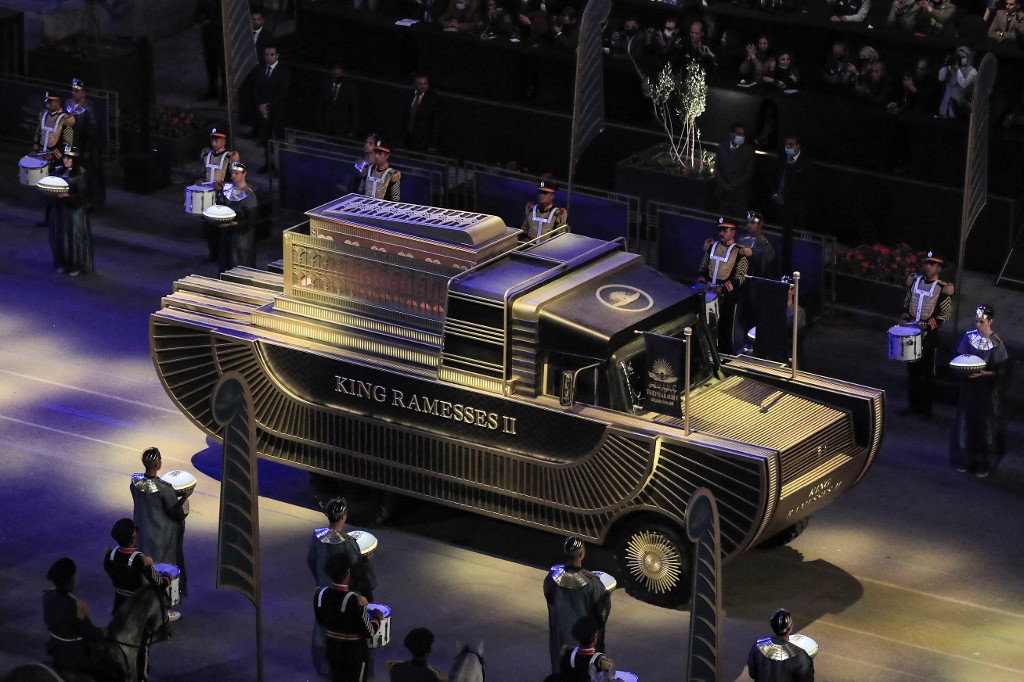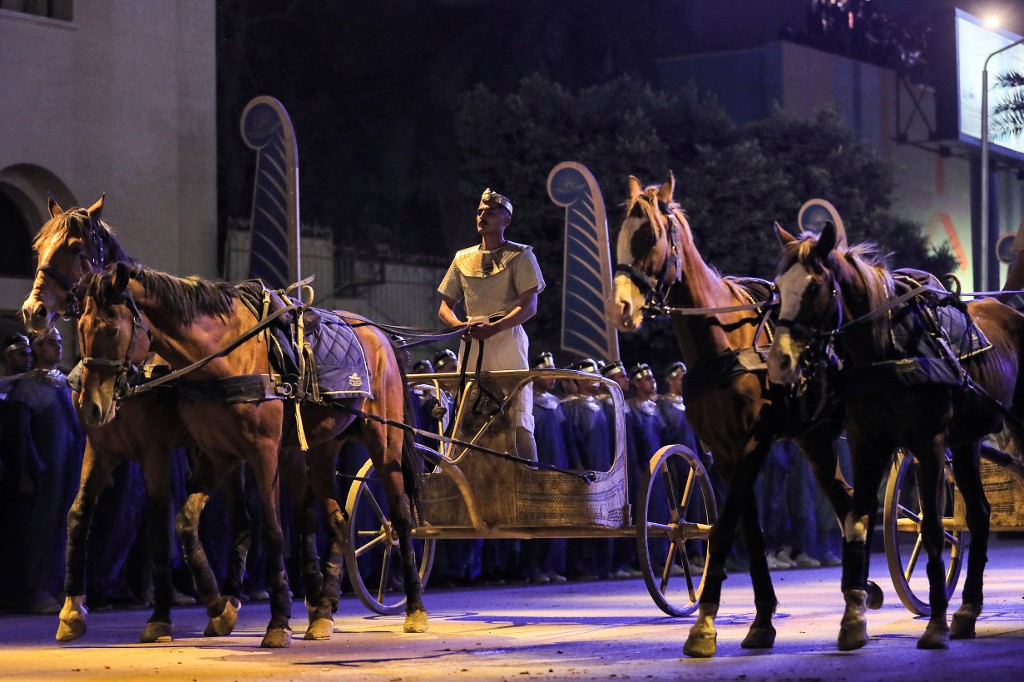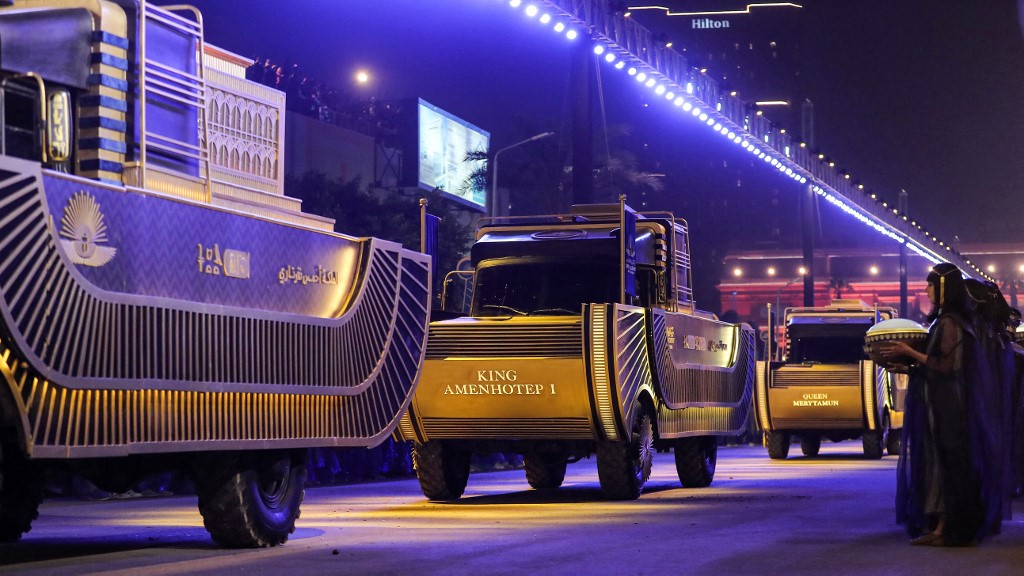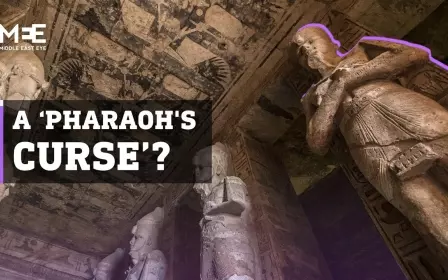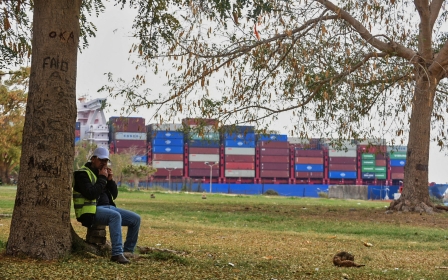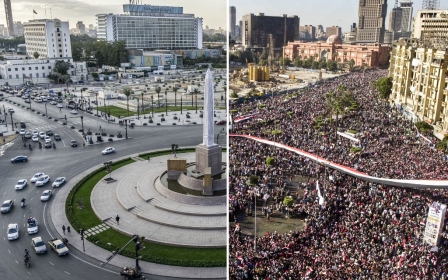Egypt's royal mummies paraded through Cairo to new home
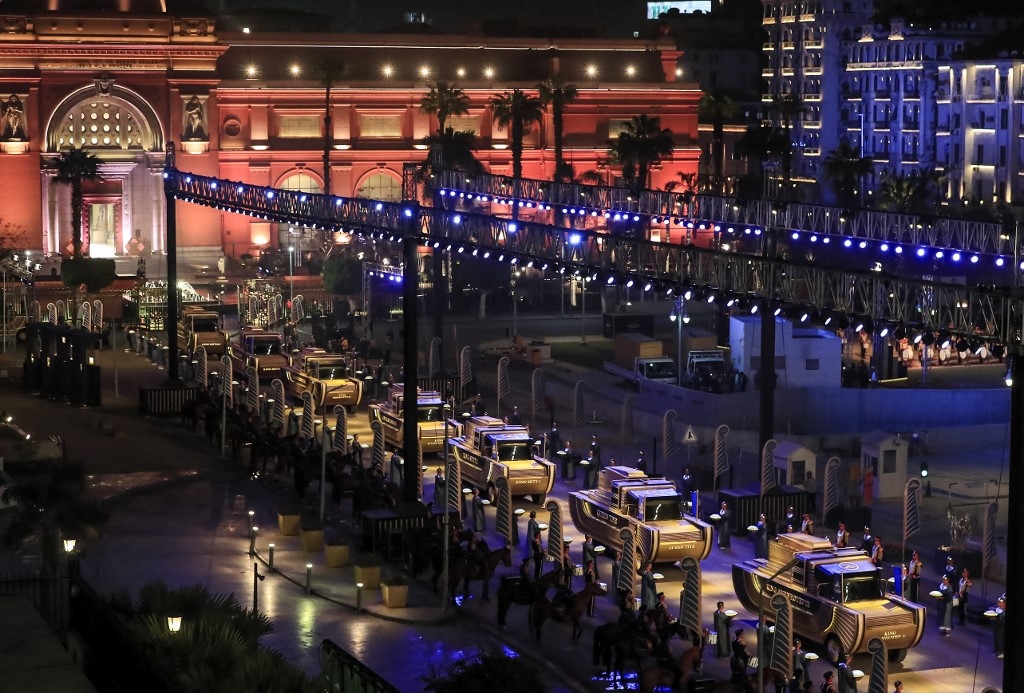
Egypt has transferred two dozen ancient mummies from the Egyptian Museum in central Cairo, where they had been exhibited since the early 1900s, to a new museum in the south of the city.
The transfer took the form of an extravagant royal parade, which was watched by tens of millions of locals and hundreds of millions of people around the globe.
The 40-minute royal procession invoked feelings of historical greatness, as those following the event watched the remains of kings and queens more than three millennia-old taking a journey to a new home in the southern part of the Egyptian capital.
The event saw the transfer of 22 royal mummies, 18 kings and four queens, to the National Museum of Egyptian Civilisation, a vast new facility located in Fustat 5km away. The remains of the ancient royals were placed inside glass boxes full of nitrogen, to mimic the conditions inside the Egyptian Museum, where they had been exhibited for the last 120 years.
New MEE newsletter: Jerusalem Dispatch
Sign up to get the latest insights and analysis on Israel-Palestine, alongside Turkey Unpacked and other MEE newsletters
They were carried on colourfully decorated vehicles, especially designed for the transfer, each of which had the name of the sovereign it was carrying emblazoned on it.
This was the largest number of mummified remains of ancient Egyptian royals to be transported from one place to another inside Egypt.
Egyptians had not seen anything of this scale before, except perhaps for the 2006 journey of the colossus of Ramses II from Ramses Square in downtown Cairo to the site of the Grand Egyptian Museum, near the Giza Pyramids.
The mummies transported included those of Seqenenre Tao, who ruled over the last of the local kingdoms of the Theban region of Egypt in the 17th Dynasty during the Second Intermediate Period.
They also included the mummies of Amenhotep I, a king of the 18th dynasty, who was the first to separate his mortuary temple from his tomb, and Ramesses II, the third pharaoh of the 19th dynasty.
Others being transferred were the mummies of Ahmose-Nefertari, Thutmose I, Thutmose II, Hatshepsut, Thutmose III, Amenhotep II, Thutmose IV, Amenhotep III, Seti I and Merneptah.
Called the Pharaohs' Golden Parade, the procession had each of these royal remains travelling in order and style from older to younger.
The vehicles carrying the mummies had shock absorbers fitted to them to protect the sovereigns on board from uneven surfaces on the road to their new home.
The carriages moved along the road slowly, passing several landmarks on the way. They included Tahrir Square, the iconic centre of the 2011 revolution in downtown Cairo, Simon Bolivar Square, near the American embassy, and the historic Shepheard Hotel.
The carriages then travelled towards the banks of the River Nile.
The parade included performances by hundreds of dancers and artists, each of whom dressed in traditional ancient Egyptian attire.
Some of Egypt's show business celebrities also participated in the parade, guarded by police on horseback.
Egyptian President Abdel Fattah el-Sisi received the mummified royals at the National Museum of Egyptian Civilisation after inaugurating the main hall of the museum.
The heads of the UN cultural agency Unesco and the World Tourism Organisation were also present at the ceremony.
The museum is in Fustat, Islamic Egypt's first capital, and covers over 33 acres of land.
"We chose the Civilisation Museum because we want, for the first time, to display the mummies in a civilised manner, an educated manner, and not for amusement as they were in the Egyptian Museum," said Egyptian archaeologist Zahi Hawass.
The Egyptian government invested $130m in the building of the new museum, according to the Ministry of Tourism and Antiquities.
Its construction started in 2000 and was completed in 2011, but its inauguration was deferred because of the unrest that roiled Egypt in the aftermath of the 2011 uprising against longstanding president Hosni Mubarak.
The museum houses 50,000 ancient artefacts, representing almost all phases of Egypt's history.
"The museum will give visitors an insight into all historical phases, from the ancient Egyptian phase to the Islamic phase, passing through the Coptic and Roman phases," Mahmud Mabrouk, the general supervisor of the museum, told Middle East Eye.
"It also contains the works of some contemporary Egyptian artists and sculptors, which document the development of life in Cairo."
Most of the mummies transferred to the new museum will be exhibited inside a hall designed especially for them.
Named the Hall of the Mummies, the new setting is modelled after the Valley of the Kings in Luxor, from where most of the mummies were unearthed from 1881 onwards.
The mummies will undergo restoration for two weeks before they are exhibited in the hall, according to the Ministry of Tourism and Antiquities.
"The restoration is a traditional procedure for mummies transferred to new places, one aiming at ensuring that the newcomers do not suffer any problems," Magdi Shaker, the chief antiquities expert at the ministry, told MEE.
The museum is one of a series of facilities constructed in the last few years to exhibit antiquities belonging to the different historical phases in Egypt. They include museums in the Red Sea resorts of Sharm el-Sheikh and Hurghada and a museum in the southern city of Aswan.
Egypt is also preparing to open the Grand Egyptian Museum at the foot of the Giza Plateau. The museum, which has been under construction for over a decade, will house over 100,000 artefacts. It will be the largest in the region.
The transfer of the royal mummies to the new museum coincides with the 124th anniversary of the laying of the foundation stone of the Egyptian Museum in central Cairo.
The cornerstone of the museum was laid on 1 April 1897 in the presence of Khedive Abbas Hilmi II, the last khedive of Egypt and Sudan.
Egypt hopes that the transfer of the mummies will breathe new life into the tourism sector.
The sector, which accounts for 15 percent of the country's gross domestic product, has been hit hard by the Covid-19 pandemic.
Egypt has already reopened tourist destinations in the Red Sea and the ancient southern cities of Luxor and Aswan, following months of closures caused by the pandemic.
"Everybody pins a lot of hope on such events to invite attention to our heritage and tourist destinations," Ahmed Youssef, the head of the Tourism Promotion Authority, the Ministry of Antiquities and Tourism's promotion arm, told MEE.
Middle East Eye delivers independent and unrivalled coverage and analysis of the Middle East, North Africa and beyond. To learn more about republishing this content and the associated fees, please fill out this form. More about MEE can be found here.


